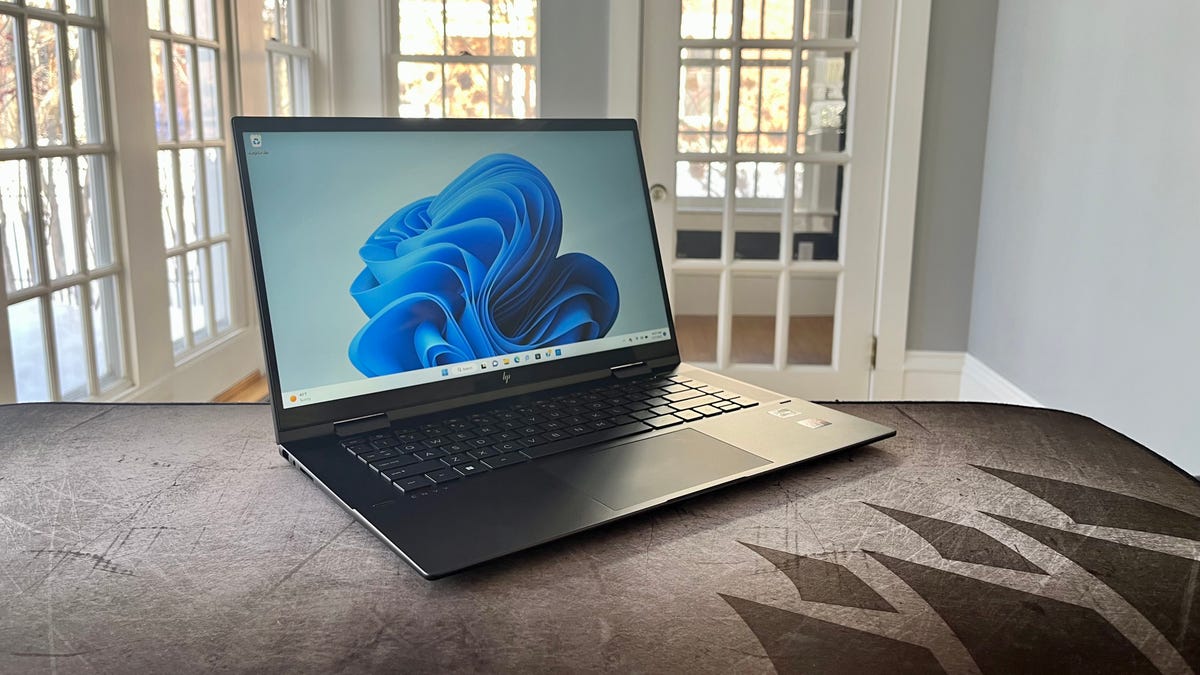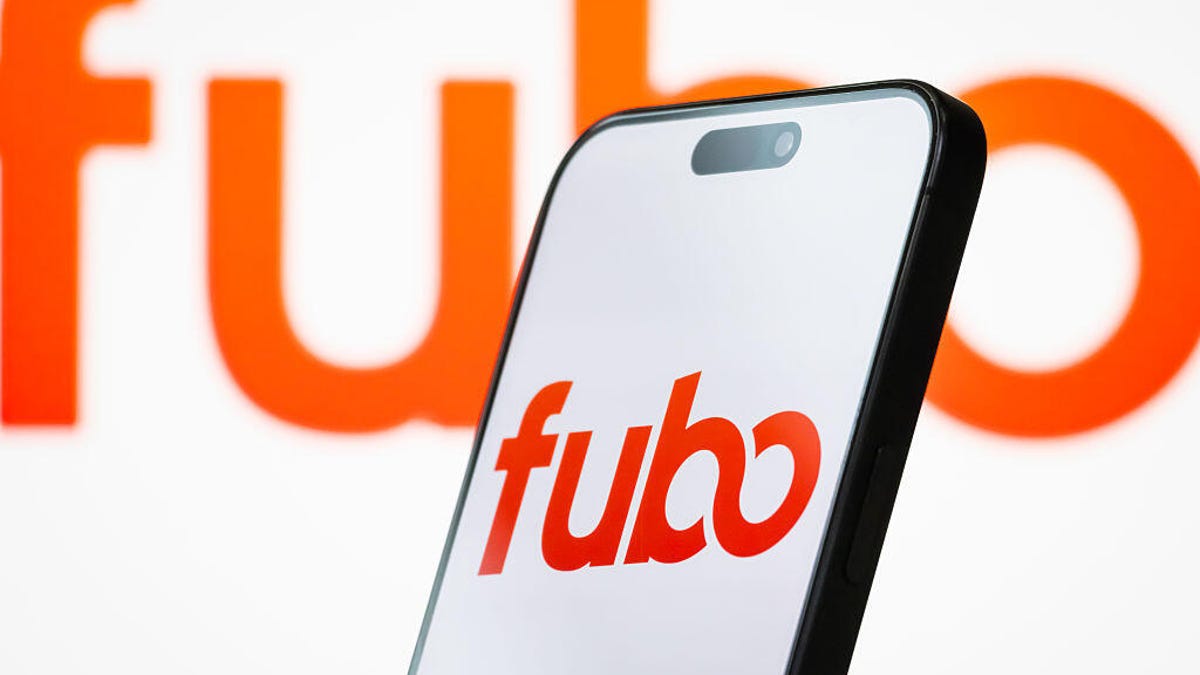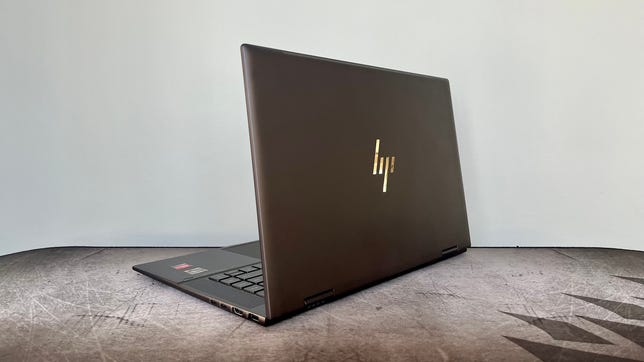Technologies
HP Envy x360 15 Review: A Good 2-in-1 Hampered by an Outdated Display
Why buy a convertible laptop with a 15.6-inch, 16:9 panel when 16-inch, 16:10 models exist?

HP’s Envy line of laptops and two-in-one convertibles is the middle child between the mainstream Pavilion series and the premium Spectre line. The Envy x360 15 is a 15.6-inch two-in-one that delivers the best of both worlds: a premium design that’s closer to that of a Spectre at a price that’s more meat-and-potatoes Pavilion. The Envy x360 15 boasts an attractive, rigid all-metal body, but the design is no different than last year’s model. And while we don’t mind last year’s looks, we are less enthused with HP sticking with a widescreen 16:9 display when the increasingly popular 16:10 panels found in such convertibles as the Dell Inspiron 16 two-in-one and Lenovo Yoga 7i 16 are roomier and more useful, while hardly adding to the system’s overall footprint.
The Envy x360 15’s component lineup is solidly midrange with a Ryzen 7 5825U CPU that’s now a year old and a generation behind AMD’s current 6000 series. It’s paired with 12GB of RAM that’s more than the 8GB you get with typical budget models but less than the 16GB you can usually find at this price. The biggest change from last year’s model is HP having doubled the webcam resolution from a grainy 720p to a crisp 1440p camera. In the era of video conferences, a bump in webcam fidelity is greatly appreciated. Then again, if the webcam is the headliner, it’s not much of an update overall.
Like
- Premium looks at mainstream price
- 1440p webcam
- Long battery life
Don’t Like
- 16:9 display feels cramped and outdated
- Dim display
HP offers the Envy x360 15 in a host of configurations with both Intel and AMD CPUs. Our test system is available at Best Buy (model 15-ey0023dx) for $1,050 and is regularly discounted to only $750. Best Buy’s sales constantly fluctuate, so if it’s not on sale there, you can find a similar model at HP with 16GB of RAM that lists for $1,130. It’s currently out of stock, but its price was reduced to $930 recently. In the UK, the Envy x360 15 starts at 750, and in Australia it’s AU$1,999.
With its octa-core Ryzen 7 5825U and 12GB of RAM, the Envy x360 offers strong application performance and some capacity for basic photo editing. Its integrated Radeon GPU isn’t as powerful as Intel’s integrated graphics processor, however, and Intel’s isn’t all that powerful to begin with. Content creators will want to look elsewhere. With the efficient Ryzen 7 U-series chip, the system is able to operate in silence the majority of the time. And when the cooling fans are required, they spin quietly. The efficient CPU also allows for long battery life — nearly 12 hours on our battery drain test.
Envious looks
The Envy x360 15 features an all-metal chassis in what HP calls Nightfall Black. The matte-black finish has a hint of brown to it and lends a luxurious look similar to that of the Spectre x360 16 — minus the gem-cut edges, gold accents and ports located in the back corners. The Envy x360 15 won’t look out of place in the boardroom or executive suite and also offers a contrast to the common sight of silver aluminum laptops in coffee shops and shared workspaces.
At 4.2 pounds (1.9 kilograms), the Envy x360 15 feels heavier than it should, likely a result of the extra layers needed for the touch display found on all two-in-ones. The 3-pound Lenovo Yoga 7i makes a better option for daily commutes with its 14-inch, 16:10 display. A smaller, lighter two-in-one also has a more natural feel in tablet mode. The Envy x360 15 looks comically tall and narrow when held in portrait mode as a tablet. It’s also too heavy to hold with one hand and tap, swipe or sketch with the other hand. One last note on the Envy x360 15 as a tablet: A pen is not included.
The aluminum chassis offers a firm feel with little to no flex — even on the lid protecting the display. The keyboard deck provides a solid foundation on which to type. The keys themselves are widely spaced, firm and flat. They offer snappy feedback and a pleasant typing experience. I was immediately comfortable typing on the Envy x360 15. The touchpad, too, is excellent. It felt roomy and responsive. Both the keys and touchpad click offer the perfect amount of travel and are quiet when engaged. No loud, clacky keys or touchpad clicks to be heard.
The 15.6-inch, widescreen 16:9 display looks outdated and cramped when you are scrolling through a long document or web page. Microsoft Word, for instance, with its fat menu bar running across the top doesn’t leave as much room as you might like to read the actual document without constantly scrolling. There’s a reason the 16:10 aspect ratio is so popular among laptops. A 16:10 display feels roomier for the simple fact that it is. A 16:9 display may be better for watching movies, but 16:10 is better for everything else.
The other drawback with the display is its dimness. I measured it at 250 nits at maximum brightness. A 250-nit panel is budget territory. I wouldn’t be surprised to see such a display on a lower-end configuration in HP’s mainstream Pavilion line, but I expect better when stepping up to the Envy series. While the matte-black chassis might be worthy of boardroom inclusion, you had better hope your boardroom isn’t drenched in natural sunlight. I had the display dialed up to max brightness in a north-facing room on a cloudy day in winter in northern New England, and there were still times I hit the brightness-up hoping for more.
In contrast to the dim, 16:9 display, the webcam received an upgrade in this year’s model. Gone is the grainy 720p webcam of yore, and in its place is a 5-megapixel camera that can capture 1440p, 30fps video. It produced a crisp, well-balanced picture with accurate color and skin tones. The webcam is also an IR cam, so you can sign in to Windows simply by placing your face in front of the laptop.
The Envy x360 15 offers a strong selection of ports, but you miss out on Thunderbolt 4 support because of the AMD chipset. The two USB-C ports support a display and high-speed data, however, and there’s also an HDMI port for connecting to an external display. With a pair of USB Type-A ports in addition to the USB-C ports, you won’t need to hassle with an adapter to connect your devices. You also get an SD card slot, which is not usually found on a mainstream laptop.
Despite its good looks, stellar webcam and comfortable keyboard, the Envy x360 15 is hard to recommend because of its dim, 16:9 display. If the display isn’t an issue for you, just be sure to wait for a good sale price. Otherwise, a more modern two-in-one with a 16:10 display such as the Dell Inspiron 16 2-in-1 or Lenovo Yoga 7i 16 provides a larger workspace without adding much to the size and weight of the system.
Technologies
Fubo Loses NBCUniversal Channels, Putting Your NBA Games in Jeopardy
Sound the carriage dispute Klaxon: Some network programming has disappeared from the streaming service after content negotiations fell through.

If you’ve noticed your favorite show has recently gone missing from Fubo, it’s probably because an entire block of programming just disappeared from the site’s channel lineup.
The live TV streaming service is engaged in a carriage dispute with NBCUniversal, a media company whose subsidiaries include NBC News, Universal Studios, Peacock, Telemundo and Illumination, among other brands.
On Nov. 21, NBCUniversal pulled all of its networks from Fubo. This is an especially big deal for sports watchers on the streaming service, since the Fubo Sports subscription — which began earlier this year — depends on the licensing agreement with NBCUniversal. However, viewers can still access sports content on networks like ESPN, CBS and ABC.
Fubo released a statement on Tuesday, alleging the media giant is engaging in «discriminatory tactics» that are harming the streamer’s subscribers.
«NBCU is discriminating against Fubo and our subscribers,» the statement says. «They allowed YouTube TV and Amazon Prime to integrate Peacock directly into their channel store, but refused to give Fubo the same rights.»
Don’t miss any of our unbiased tech content and lab-based reviews. Add CNET as a preferred Google source.
Fubo says NBCUniversal is trying to force a multiyear deal for certain channel packages under the media giant’s new spin-off media company, Versant, and that it’s trying to upcharge on the Fubo Sports subscription by adding «expensive, non-sports channels» into the agreement, increasing the cost.
According to NBCUniversal’s website, the Versant brands include CNBC, E!, MS Now, SyFy and USA, among other channels.
NBCUniversal did not respond to a request for comment.
Fubo says that it’s willing to move forward without NBCUniversal content if an agreement cannot be reached.
«Fubo is committed to bringing its subscribers a premium, competitively-priced live TV streaming experience with the content they love,» its statement concludes. «That includes multiple content options, including a sports-focused service, that can be accessed directly from the Fubo app.»
Fubo recently became an affiliate of The Walt Disney Company, following its merger with Hulu’s live TV platform in October. It’s unclear whether this merger affected content agreement negotiations with NBCUniversal. Fubo did not respond to a request for comment on this.
Technologies
Spotify Will Reportedly Get More Expensive in the US Next Year. Here’s What to Expect
The music streaming service will reportedly raise prices again after subscription rate hikes in other regions.

After announcing it is raising prices in regions including Europe, South Asia and Latin America, Spotify is reportedly about to increase prices again in the US.
The US is included in the latest Spotify price hike on its Premium services starting in early 2026, according to the Financial Times, which cited three sources familiar with the streaming music company’s dealings. For now, the least expensive Premium plans in the US start at $12, but the price hike would likely put it in line with the other regions where the Premium plan costs about $14 a month.
Don’t miss any of our unbiased tech content and lab-based reviews. Add CNET as a preferred Google source.
Spotify also offers a Premium Family plan that covers six people in the same household for $20 and plans for students ($6 a month bundled with Hulu) and couples ($17 a month). Spotify also offers a Basic plan that does not include access to audiobooks for $11 a month. A representative for Spotify did not immediately respond to a request for comment.
A steady increase
If the report is accurate, this would be the third price increase on Premium plans in the US since 2023. Before those hikes, Premium plans were $10, but Spotify raised its minimum price by $1 in 2023 then again in 2024.
Just this week, Spotify added the ability to seamlessly import playlists from other music services including Apple Music and Tidal.
Spotify has faced some controversy this year, including some music acts abandoning the platform and some customers canceling subscriptions over advertising for Homeland Security’s ICE program. CNET has a guide for canceling your Spotify subscription.
The company is the market leader among music streaming apps with about 32 percent market share as of the end of 2024.
Technologies
Some Rad Power Bike E-Bike Batteries Can Catch Fire, Consumer Protection Agency Warns
The company declined to offer full replacements or refunds, citing financial constraints.

The US Consumer Product Safety Commission is warning that some lithium‑ion batteries used in certain e‑bikes made by Rad Power Bikes pose a serious fire hazard that could lead to injury or even death. The agency says the batteries, identified by model numbers RP‑1304 and HL‑RP‑S1304, can unexpectedly ignite or explode, especially if the battery or its harness has been exposed to water or debris.
The recall has been marked as a «public health and safety finding» because Rad Power Bikes has declined to offer full replacements or refunds for all consumers, citing financial constraints.
CPSC reports 31 incidents of fire involving these batteries, including 12 cases where property damage totaled approximately $734,500. Some of these fires occurred even when the battery was not in use or charging, but was in storage.
Don’t miss any of our unbiased tech content and lab-based reviews. Add CNET as a preferred Google source.
The batteries were sold as either original or replacement units for several Rad Power Bikes e-bike models and were available through RadPowerBikes.com, Best Buy and independent bike shops nationwide.
«Rad informed the agency that its demand to replace all batteries, regardless of condition, would immediately put Rad out of business, which would be of no benefit to our riders,» the company said in a statement issued with the CPSC warning. «Rad is disappointed that it could not reach a resolution that best serves our riders and the industry at large. Rad reminds its customers to inspect batteries before use or charging and immediately stop using batteries that show signs of damage, water ingress, or corrosion, and to contact Rad so we can support our riders.»
The CPSC’s statement does not apply to all Rad batteries, and does not apply to its Safe Shield or semi-integrated batteries.
Consumers who have one of the affected batteries are urged to stop using it immediately and dispose of it properly via a household hazardous‑waste collection center. Do not place the batteries in standard curb-side recycling or trash bins, and refrain from reselling them.
-

 Technologies3 года ago
Technologies3 года agoTech Companies Need to Be Held Accountable for Security, Experts Say
-

 Technologies3 года ago
Technologies3 года agoBest Handheld Game Console in 2023
-

 Technologies3 года ago
Technologies3 года agoTighten Up Your VR Game With the Best Head Straps for Quest 2
-

 Technologies4 года ago
Technologies4 года agoBlack Friday 2021: The best deals on TVs, headphones, kitchenware, and more
-

 Technologies4 года ago
Technologies4 года agoVerum, Wickr and Threema: next generation secured messengers
-

 Technologies4 года ago
Technologies4 года agoGoogle to require vaccinations as Silicon Valley rethinks return-to-office policies
-

 Technologies4 года ago
Technologies4 года agoOlivia Harlan Dekker for Verum Messenger
-

 Technologies4 года ago
Technologies4 года agoiPhone 13 event: How to watch Apple’s big announcement tomorrow

